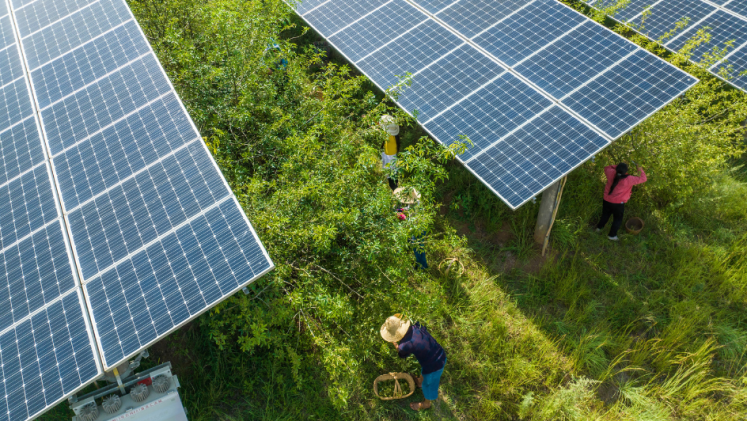Agrivoltaics (AV) is an innovative Water-Energy-Food Nexus approach that increases land-use efficiency through the combination of solar energy generation with agricultural production. In simple terms, solar panels are placed on an elevated structure which allows for space for agricultural activities beneath.
The concept was pioneered in Germany in 1982, and since then AV has been recognized as a strategy for minimizing the impacts of solar panel installations in land use. The Pan African Cooperation and Educational Technologies (PACET) division of UNU-VIE is leading the APV-MaGa project in establishing four AV demonstrators in farms in Mali and The Gambia.
Here are five insights on how it works and how AV can be a boost for resilience:
An agrivoltaic system can make crop production more resilient to crop failure and climate change
With proper design and modelling, an AV system can lower plant and crop temperatures and reduce evaporation and transpiration, the processes of moisture leaving soil and vegetation. Furthermore, a unique benefit is that a microclimate can be created under the panels, which can help crop growth and production.
Agrivoltaics can be a catalyst for development
AV systems can spur development in communities, potentially bringing electricity and services such as water pumping, food processing and cold storage for food preservation. An AV system can be upgraded with a rainwater harvesting system, which promotes a “triple land-use” approach that can reduce the total space needed for food, water and energy production.
Agrivoltaics can be best utilized in places facing increasing temperatures, water scarcity and a lack of energy supply
Agricultural fields in regions which face increasing temperatures, receive high solar irradiance and are prone to water scarcity can benefit from the partial shading provided by the panels, potentially increasing their yield. At the same time, panels can be used for rainwater harvesting, increasing water availability. Additionally, the technology can be very helpful in places where space is already limited, or where a decentralized energy system is the only option to access energy.
To be successful, installations must be designed closely with communities to address their needs and interests
While agrivoltaics offers numerous benefits, its implementation still faces challenges due to a necessary paradigm shift and the need for widespread acceptance prior to installation. As a relatively new technology and approach it can face some resistance. This is particularly a challenge in low-income countries where social acceptance, capacity-building and a close working relationship with the beneficiary community and local stakeholders are key for the successful and sustainable installation of an AV system.
Agrivoltaic systems can potentially improve and create socioeconomic opportunities through the implementation of sustainable business models
AV systems must be tailor-made for desired activities, certain settings and crop types. Socioeconomic opportunities include the creation of business models around the productive uses of energy, such as water pumping, food processing and cold storage for food preservation. With profits, the costs associated with maintenance and repairs can be covered, increasing the sustainability of the installation, agricultural activities, and the livelihoods of the communities. The Pan African Cooperation and Educational Technologies (PACET) division of UNU-ViE is leading the APV-MaGa project to establish four AV demonstrators in farms in Mali and The Gambia, testing different business models to ensure the AV systems are sustainable and long-lasting.


